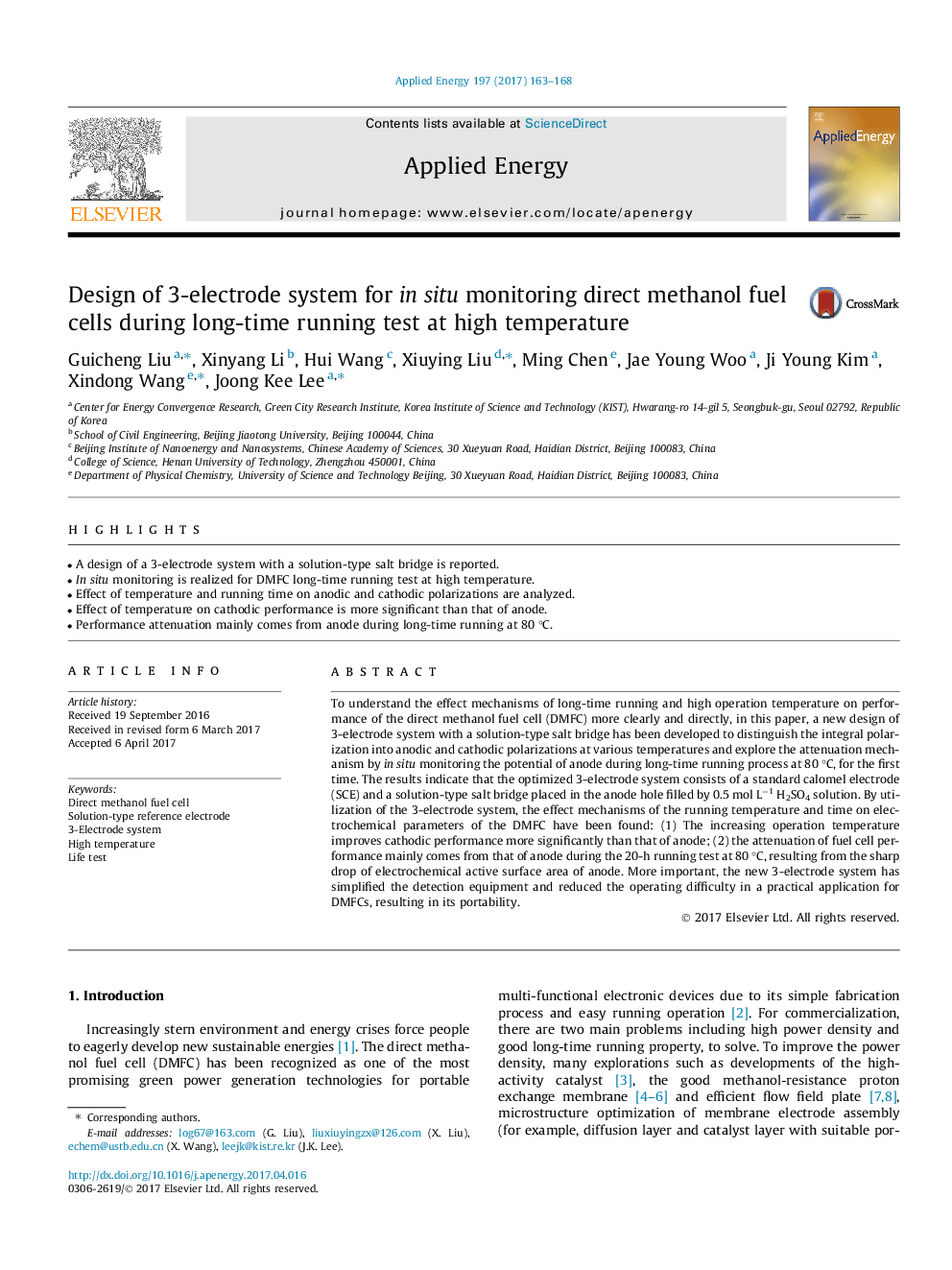| Article ID | Journal | Published Year | Pages | File Type |
|---|---|---|---|---|
| 4916255 | Applied Energy | 2017 | 6 Pages |
Abstract
To understand the effect mechanisms of long-time running and high operation temperature on performance of the direct methanol fuel cell (DMFC) more clearly and directly, in this paper, a new design of 3-electrode system with a solution-type salt bridge has been developed to distinguish the integral polarization into anodic and cathodic polarizations at various temperatures and explore the attenuation mechanism by in situ monitoring the potential of anode during long-time running process at 80 °C, for the first time. The results indicate that the optimized 3-electrode system consists of a standard calomel electrode (SCE) and a solution-type salt bridge placed in the anode hole filled by 0.5 mol Lâ1 H2SO4 solution. By utilization of the 3-electrode system, the effect mechanisms of the running temperature and time on electrochemical parameters of the DMFC have been found: (1) The increasing operation temperature improves cathodic performance more significantly than that of anode; (2) the attenuation of fuel cell performance mainly comes from that of anode during the 20-h running test at 80 °C, resulting from the sharp drop of electrochemical active surface area of anode. More important, the new 3-electrode system has simplified the detection equipment and reduced the operating difficulty in a practical application for DMFCs, resulting in its portability.
Related Topics
Physical Sciences and Engineering
Energy
Energy Engineering and Power Technology
Authors
Guicheng Liu, Xinyang Li, Hui Wang, Xiuying Liu, Ming Chen, Jae Young Woo, Ji Young Kim, Xindong Wang, Joong Kee Lee,
